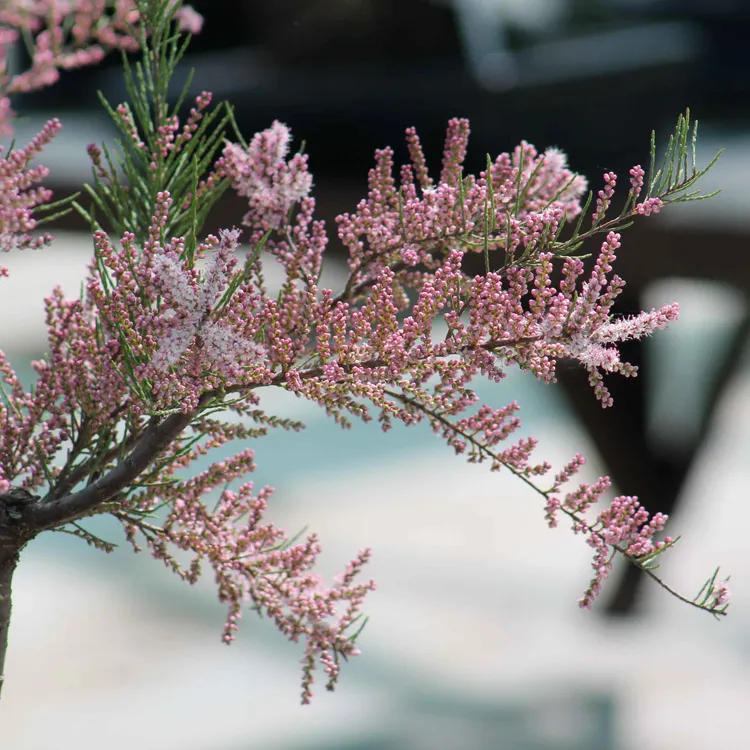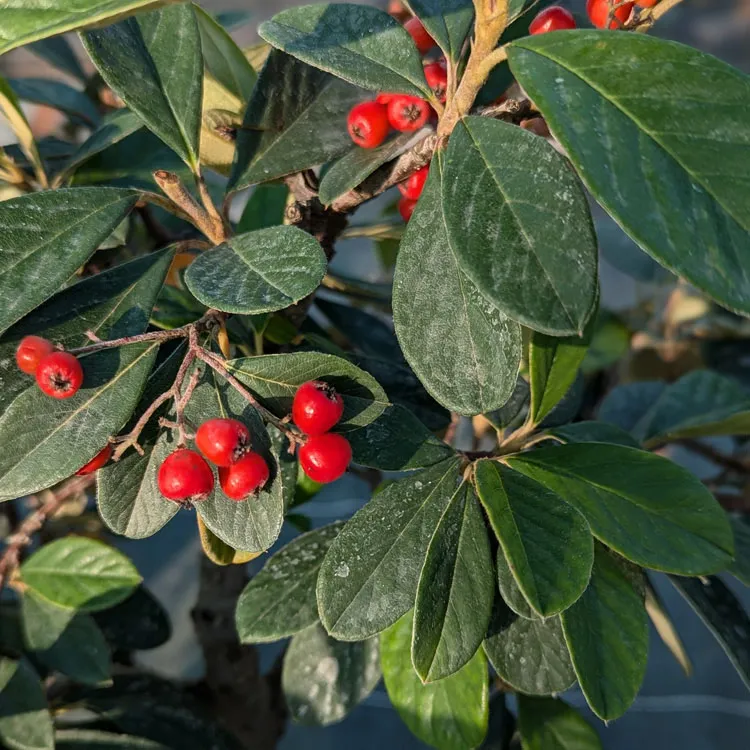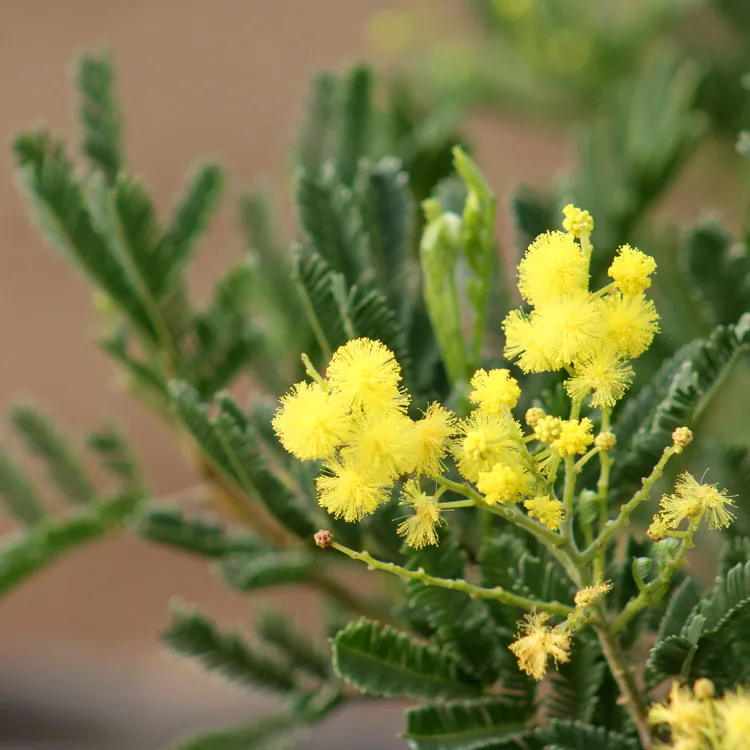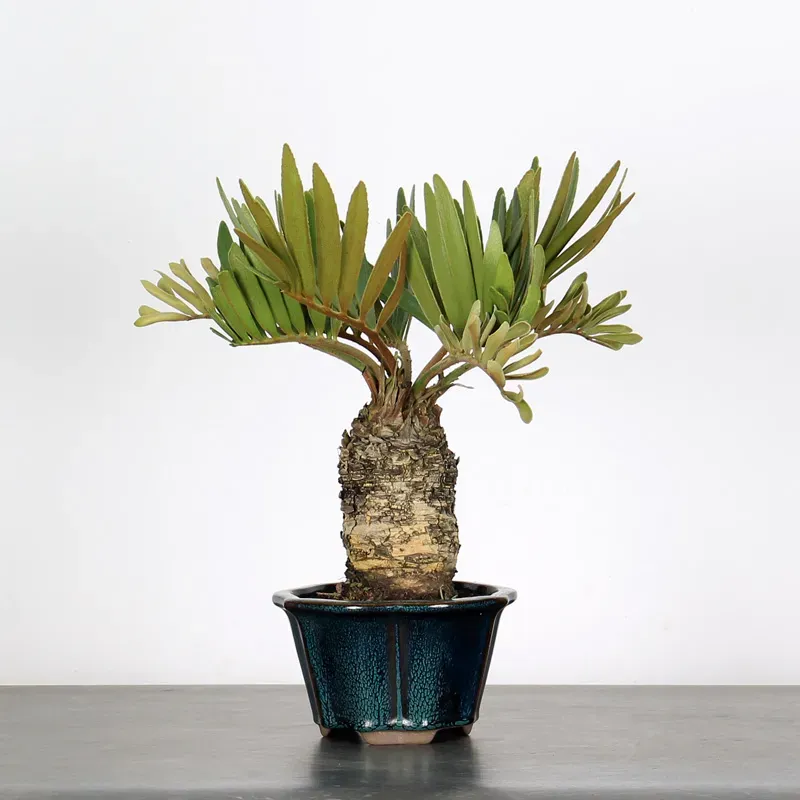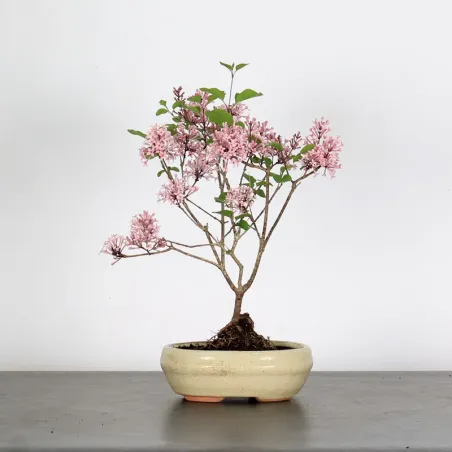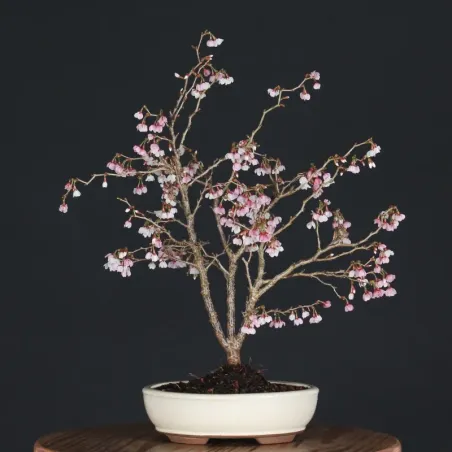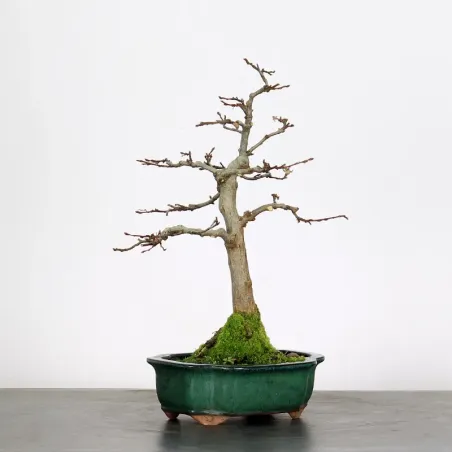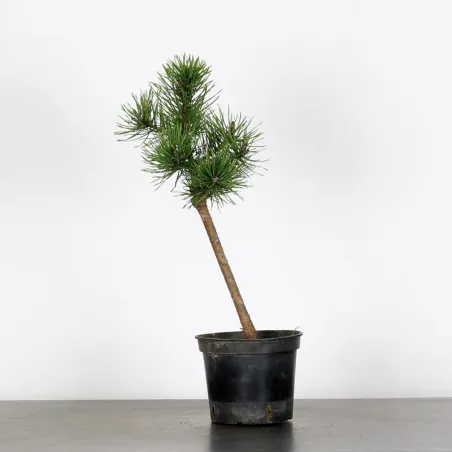Privilégiez un emplacement en extérieur du printemps à l’automne et à l'intérieur en hiver. Veillez à ce qu'il profite de la lumière du soleil. En cas de période de canicule et de soleil brûlant, placez-le bien à l’ombre pour ne pas l’endommager. En hiver, placez-le dans une pièce lumineuse (pas trop chauffé), véranda ou serre froide (entre 15°C et 26°C). Effectivement, le zamia vient des zones chaudes et humides telles que les savanes tropicales ou subtropicales. Évitez de l’exposer à une température inférieure à 10°C.
 English
en
English
en
Bonsai
Zamia 1-5
Zamia , Zamioculcas zamiifolia , is an evergreen shrub with hairy, hard, green foliage. It is widely used as a houseplant, in greenhouses or conservatories. As the plant is frosty, care must be taken to protect it or bring it indoors if the temperatures become too cold.
+ Age: 20 years old
+ Origin: Mexico
+ Type: Hardy shrub
Origin:
The zamia is native to Mexico, from the warm sandy coastal plains. The Americans call it the "Cardboard palm". It is an evergreen, hairy, hard, green shrub. The pinnate leaves may be toothed on top. Arranged in a wreath, they are similar to palm and fern leaves. It does not produce flowers but cones. It is dioecious, meaning that it produces female cones with red seeds and male cones on separate plants.
Growing tips:
Location: Choose an outdoor location from spring to fall and indoors in winter. Make sure it gets plenty of sunlight. In case of a heat wave and scorching sun, place it well in the shade so as not to damage it. In winter, place it in a bright room (not too heated), conservatory or cold greenhouse (between 15°C and 26°C). Indeed, zamia comes from warm and humid areas such as tropical or subtropical savannahs. Avoid exposing it to a temperature below 10°C.
Watering: Zamia needs a substrate that is always moist. Water it regularly while allowing the root ball to dry out slightly between waterings to avoid excess water. Watering should be done on a regular basis. In hot weather, it's every day !
To do it right : water the entire root ball up to the roots, the water will drain away through the holes under the pot or bathe the tree in water (drenching) for a few minutes. We do not recommend putting a cup or container underneath your pot as the water will stagnate and can cause root rot. (Too much water = asphyxiation).
Substrate and repotting: Repot your Zamia every 3-4 years in the spring, in a pot with a larger diameter than the old one. This helps to regenerate the soil.
Waist: Remove damaged leaves as it develops. Never fold the Zamia down.
Fertilization: In the nursery, we use blue tomato/flower fertilizer NPK 12 12 17. Put a handful (small or large depending on the size of the pot) on the substrate from May to October, every 2 months, alternating chemical/organic.

 Production of French Bonsai
Production of French Bonsai











































